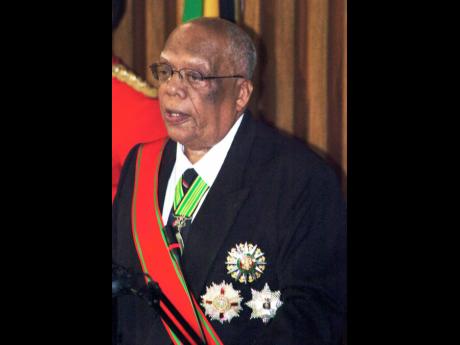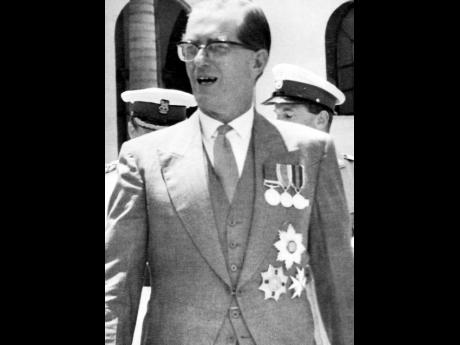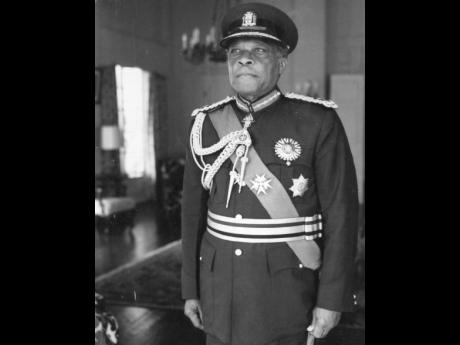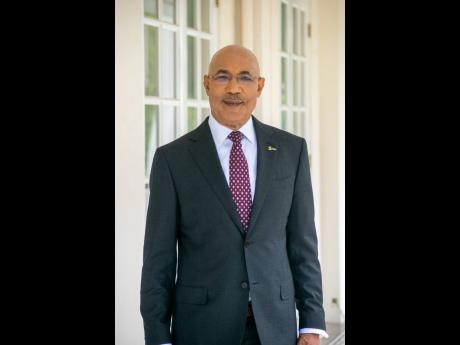Over 500 years of monarchical oversight coming to an end
SOON, THE monarchy of Britain will not be the head of the Jamaican state. It has been such since 1661, six years after the British, led by Admiral William Penn and General Robert Venables, arrived on the Spanish-ruled island on May 10, 1655. The Spaniards had started to settle here since 1510/1511.
The Spanish had their own string of governors up to when the British arrived, and they did not leave right away in 1655. Francisco de Proenza came, to be the Spanish governor. After him, Don Cristobal Arnaldo de Ysassi arrived with a force with to fight the British.
The British governance of the island was carried out by military commissioners from 1655 to 1660/61. A part of the army remained for the security of the island and some people chose to settle here. General Sedgwicke arrived from England to take charge of the island soon after the British came. He died in May 1656, and was replaced in December by General Brayne, who died in September 1657.
Martial law was the norm until the restoration of King Charles II, who in 1661 appointed Edward D’Oyley, the last military commissioner, as the first British governor, replacing Brayne. General Edward D’Oyley had defeated de Ysassi in 1658 in the battle of Rio Nuevo. Two years later, the remaining Spaniards fled Jamaica, but the Spaniards did not officially cede the island to the British until 1670.
Since D’Oyley, the island of Jamaica has been ruled by governors, lieutenant-governors, presidents and administrators, representing the monarch of the day. The first president was Colonel Thomas Lynch, in 1664. He came back as lieutenant-governor from 1671-1674. There was one deputy governor, Sir Charles Lyttleton, 1662-1664. One hundred years later, there was another Lyttleton, William Henry, who ruled from1762–66.
The longest-serving representative up to 1962 was William, the Duke of Manchester, after whom the parish of Manchester was named. He served for 18 years; however, his reign was not continuous. His terms were from 1808-1811, 1813-21, and 1822-1827. The longest continuous governance was by Edward Trelawny, 1738-1752, 14 years. The notorious pirate Sir Henry Morgan served as lieutenant-governor thrice, 1674, 1678 and 1680-82.
And talking about notoriety, in 1683, Morgan and Colonel Byndloss were suspended from the Council and all commands. Morgan died in 1688 and is buried at Port Royal, his former stomping ground. Sir Thomas Modyford, who arrived in 1664 from Barbados with 1,000 settlers to become governor, was sent back to Britain a prisoner. Governor Edward Eyre was suspended and recalled for the way in which he dealt with the Morant Bay Uprising in 1865. He was however exonerated.
Those who died in office were General Sedgwicke on May 24, 1656; General William Brayne in September 1657; Christopher, Duke of Albermarlein 1688; Major General Robert Hunter in 1734; John Ayscough in 1735; and General George Haldane in July 1759. Add to the list, Sir Edward Brandis Denham, 1934/5-1938.
The later part of his reign was fraught with social and political unrests. It was the era of the birth of the PNP and the JLP. Perhaps, it was the stress of Jamaica’s complex and difficult problems that led to his having a heart attack in King’s House on June 2, 1838. The following day, the crew of the HMS Ajax buried him at sunset three miles offshore in a bronze coffin. Denham Town in west Kingston was named in his honour.
Though these representatives’ tenures and lives are long over, some of them are immortalised by way of the names of some of our streets and places. They include Charles, Earl of Carlisle; William Beeston; Peter Beckford; Peter Heywood; Nicholas Lawes; Henry, Duke of Portland. William Trelawny; Charles Knowles; George Haldane, George Nugent; William, Duke of Manchester; Peter, Marquis of Sligo; and Captain Charles Darling.
While Lionel Smith was the Emancipation governor (1836-39). When Independence came along in August 1962, Sir Kenneth Blackburne was governor, making him the last British monarchical representative in Jamaica. He demitted office in November. Clifford Clarence Campbell (December 1962-June 1973) replaced him, thus becoming Jamaica’s first native representative of the British monarchy in his capacity as governor general.
He was succeeded by Florizel Augustus Glasspole (June 1973-March 1991), Howard Felix Hanlan Cooke, (August 1991-February 2006), Kenneth Octavius Hall (February 2006-February 2009) and Patrick Linton Allen (February 2009 to the present), the second longest serving British monarchial representative in Jamaica, and at this point, he seems to be the last.





